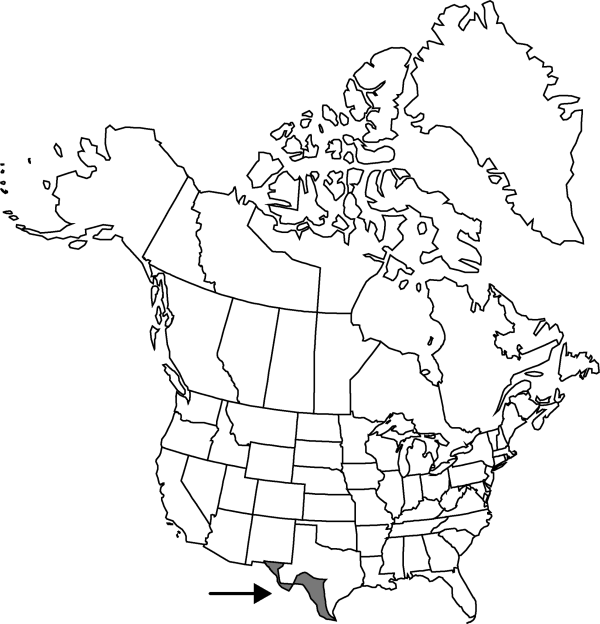Echinocereus enneacanthus
in F. A. Wislizenus, Mem. Tour N. Mexico, 111. 1848.
Plants branched forming dense or lax clumps with 20–100 (–500) branches, usually branching before flowering. Stems somewhat lax often sprawling, longest stems sometimes prostrate, cylindric, 8–40 (–100?) × 3.2–15 cm; ribs (6–) 7–10 (–12), crests essentially uninterrupted; areoles (11–) 14–52 mm apart. Spines 6–14 per areole, straight or central spines slightly curved throughout their lengths, ± opaque, white, pale tan, or purplish gray, often extensively tipped or banded with brown; radial spines 5–10 (–13) per areole, 9.5–40 (–47) mm, usually less than 1/2 as long as central spines; central spines 1–4 (–5) per areole, all or mostly projecting, abaxial spine porrect or descending, frequently compressed or angular in cross-section (sometimes sulcate, keeled, or striate), (12–) 20–84 (–96) mm. Flowers (4.5–) 5–7.5 × 5–5.6 (–9) cm; flower tube 10–30 × 10–22 (–40) mm; flower tube hairs 1–2 mm; inner tepals pink or magenta, darkest proximally, 28–55 × 8–14 (–20) mm, tips relatively thin and delicate; anthers yellow; nectar chamber 4–6 mm. Fruits pale yellow-green or dull reddish, 20–30 mm, pulp white or pale-pink. 2n = 22.
Distribution

Tex., Mexico.
Discussion
Varieties 2 (2 in the flora).
The commonly recognized concept of Echinocereus enneacanthus var. enneacanthus (W. O. Moore 1967; D. Weniger 1970; L. D. Benson 1982) pertained to the small eastern var. brevispinus.
Selected References
None.
Key
| 1 | Stems (5-)8-14(-15) cm diam.; radial spines 5-8(-9) per areole; central spines 56-84(-96) mm | Echinocereus enneacanthus var. enneacant |
| 1 | Stems slender 3.2-4.5(-7.5) cm diam.; radial spines 8-10(-13) per areole; central spines (12-)20-44(-50) mm | Echinocereus enneacanthus var. brevispin |